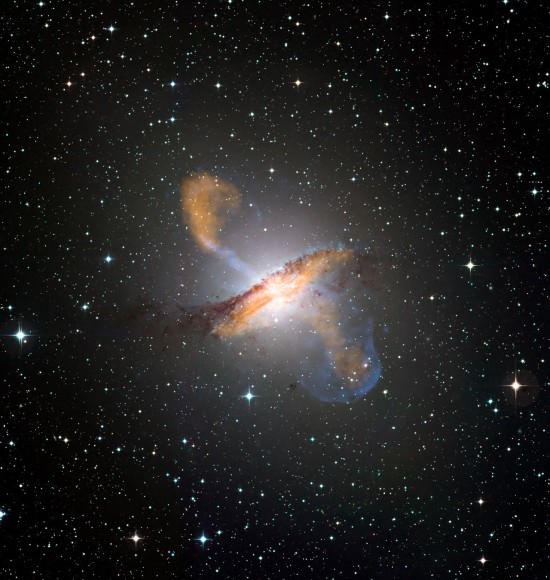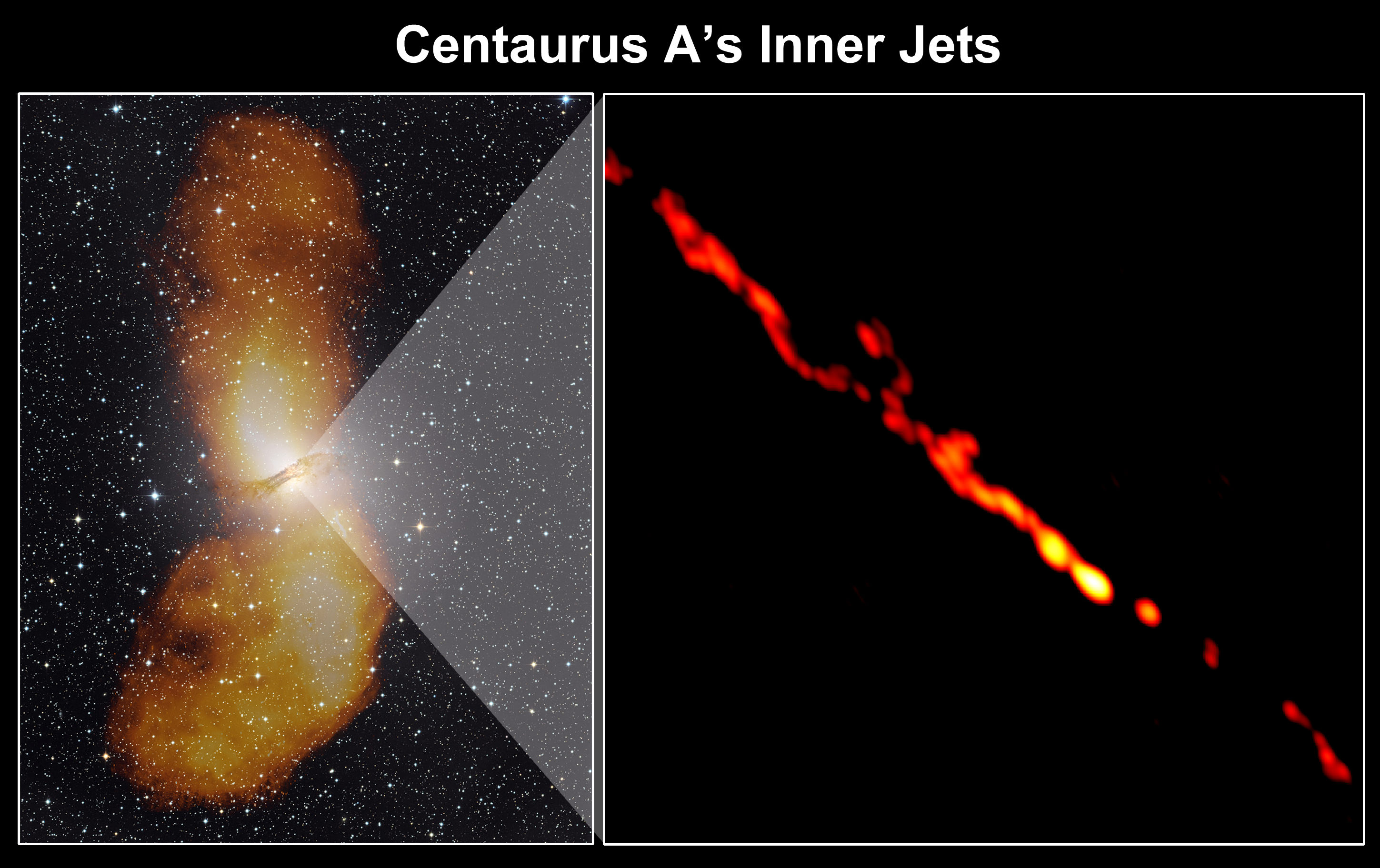[/caption]
A new image taken by an array of radio telescopes is the best resolution view ever of particle jets erupting from a supermassive black hole in a nearby galaxy. An international team of astronomers targeted Centaurus A (Cen A), and the image shows a region less than 4.2 light-years across — less than the distance between our sun and the nearest star. Radio-emitting features as small as 15 light-days can be seen, making this the most detailed image yet of black hole jets.
“These jets arise as infalling matter approaches the black hole, but we don’t yet know the details of how they form and maintain themselves,” said Cornelia Mueller, the study’s lead author and a doctoral student at the University of Erlangen-Nuremberg in Germany.
The data was gathered by the TANAMI project (Tracking Active Galactic Nuclei with Austral Milliarcsecond Interferometry), an intercontinental array of nine radio telescopes.
While not completely understood, black hole particle jets typically escape the confines of their host galaxies and flow for hundreds of thousands of light years. They are somewhat a paradox, because while black holes are known for pulling matter in, they also produce these jets which accelerate matter at near light speed.
They are a primary means of redistributing matter and energy in the universe, and understanding them will be key to understanding galaxy formation and other cosmic mysteries such as the origin of ultrahigh-energy cosmic rays.
While the black hole is invisible, the jets are seen in great detail in the new image. Cen A is located about 12 million light-years away in the constellation Centaurus and is one of the first celestial radio sources identified with a galaxy.
Seen in radio waves, Cen A is one of the biggest and brightest objects in the sky, nearly 20 times the apparent size of a full moon. This is because the visible galaxy lies nestled between a pair of giant radio-emitting lobes, each nearly a million light-years long.

These lobes are filled with matter streaming from particle jets near the galaxy’s central black hole. Astronomers estimate that matter near the base of these jets races outward at about one-third the speed of light.
The new study will appear in the June issue of Astronomy and Astrophysics and is available online.
Source: NASA

